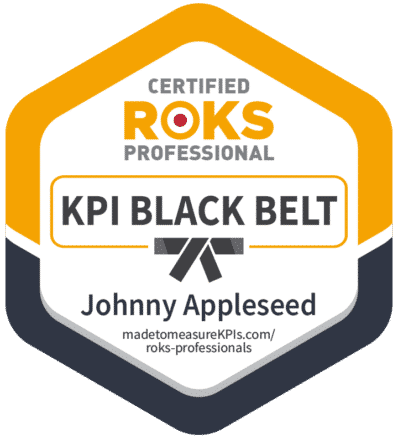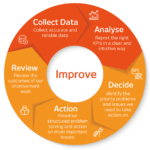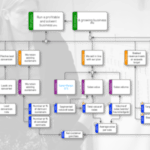What is customer engagement?
Our marketing efforts will only succeed if we can move our audience to take action. The trouble is, it can be hard to know what to measure. Customer engagement is a key element of the process of creating a relationship with your customers. Engagement can be as simple as a subscriber clicking a link in an email you sent, but it can also include video views, shares, comments and purchases. Engagement is any event or experience that drives a response or action from your customer.
Here are nine core engagement metrics to seriously consider when it comes to measuring your customer engagement...

1. Social Media Engagement
Marketing success depends on our ability to create relationships with customers, and social media is one of the best ways to do this. Measuring social media engagement is essential for determining how well we're connecting with people online.
There's a wide range of engagement types, within social media, so it can be useful to grade them. One way of doing this to split them in into passive and active social media engagement:
Passive engagement
Passive engagements are those that require just a single button tap. Social media likes and shares fall into this category.
Active engagement
Active engagement requires indicates higher value engagement, as it requires additional effort. Active engagements include social media comments, retweets with remarks or sending a private message with a note. Any activity that takes intellect and thoughtfulness on social media is considered an active engagement.
If you are measuring social media engagement, it's best to do so as a 'rate'. This will normally take the form of a standarised metric on a scale of 0-100, trended over time, e.g. 'rate per 1000 followers'. Why use a 'rate' rather than a 'count'? Well, 100 social media 'likes' means a lot more coming from a page with 100 followers than one with 10,000. Your engagement metric should reflect this.
Calculating Social Media Engagement
It can get a little tricky to measure engagement across multiple social media platforms, as each platform has slightly (or significantly) different forms of engagement.
The typical calculation is...
Engagement = [count of 'Engagement' activity]
Engagement rate = [count of 'Engagement' activity] / [views] or [users]
The exact calculation will vary a little for each platform.
There are a number of social media reporting aggregation tools that can take a lot of the slog out of engagement measurement. Whilst they take some time and effort to set up, they are almost always worth the effort in the long-run!
Benefits of Social Media Engagement as a KPI
- It shows you how real-human users (rather than search engines) are responding to your content.
- By looking at what content provokes engagement you can get powerful insight into what your users are interested in and find useful.
Limitations of Social Media Engagement as a KPI
- Be careful, not all engagement is postive. People will share and interact then the are outraged, as well and enthused.
- Keep an eye on sentiment, not just engagement, to get a more complete picture.

2. Visit Frequency
How often a customer visits your website is another strong indicator of their engagement with your brand or service. If they're coming back repeatedly, it probably means they are interested in what you have to say. If they're not, it could mean you need to rethink your content strategy.
Calculating Visit Frequency
It really couldn't be simpler. You simply count the number of visits, something that is already captured by Google Analytics or Jetpack (as used by many WordPress sites). Just make sure you are clear whether you are looking at 'page visits' or 'unique visitors'.
Benefits of Visit Frequency as a KPI
How often a customer visits your website is a strong indicator of their engagement with your brand. If they're coming back often, it means they're interested in what you have to say.
Limitations of Visit Frequency as a KPI
Visit frequency has a few limitations.
- It doesn't take into account the quality of the visits.
- Visit frequency can be skewed by marketing campaigns. If you run a promotion that encourages people to visit your website, the number of visits will go up, even if customer engagement hasn't changed.
- Another potential issue is bot traffic or shared IP addresses make automated or multi-source traffic look like revisits by a real human being.

3. Session time
Session time is the aggregate time a specific visitor spends on your site. Longer session durations can be a strong indicator of customer engagement. If customers are spending a lot of time on your website, it often means they are interested in what you have to say.
Calculating Session Time
Typically Session Time is the 'average' session time for a given date range. This is usually provided the back-end of your web site, Google Analytics or Jetpack. Just make sure you are clear what period you are reporting. It can be also be useful to report the 'distribution' of session times, as this will often highlight if you have a small number of 'rogue', super-long long visits that distort your average. Another way of avoiding this kind of distortion is to use the 'median' site visit duration.
Benefits of session time as a KPI
It's a 'whole site' indicator, so it gives a more wholistic view of engagement than, say, visit time on a specific page.
Limitations of session time as KPI
While session time is an important metric, it has a few limitations. Like visit frequency, it doesn't take into account the quality of the visits. A customer who spends a lot of time on your website but never interacts with your content is less engaged than a customer who spends a little time on your website and interacts with your content.
Secondly, session time can be skewed by marketing campaigns. If you run a promotion that encourages people to visit your website, the number of visits will go up, even if customer engagement hasn't changed.
Thirdly, because it's a whole-site metric, it can take some work to figure out why a visitor is engaged.
Another thing to bear in mind is that this figure can also be skewed by 'abandoned browser sessions' and increased session time due to naviational issues on your site (a frustrated but determined visitor trying, but failing, to find what they are looking for).

4. Customer lifetime value
Customer lifetime value (CLV) is a strong indicator of customer engagement. If customers are spending a lot of money with your company, it means they're highly engaged with your brand. This KPI also closely links to Customer Churn (higher churn rate is a leading indicator of a drop in CLV).
Calculating Customer Lifetime Value
The Customer Lifetime Value is calculated as either the [sum of lifetime sales revenue] or [sum of lifetime profit] by customer.
This is normally a straightforward KPI to generate when calculating the CLV for B2C customers. You need to be a little more careful to avoid double-counting if the customers you deal with are B2B and they have complex corporate structures or multiple divisions.
Benefits of customer lifetime value as KPI
If customers are spending a lot of money with your company, there's a good chance they are interested in what you have to say and the products you offer, particularly if their lifetime spend is made up of a series of purchases, rather than a single 'high value' event.
Limitations of customer lifetime value as KPI
Customer Lifetime Value is a lagging measure, so it tells you about value after the customer has bought something (or many things).

5. Email engagement
If customers are opening and clicking through your emails, it means they're interested in what you have to say. Coversely, if you are sending emails and they are not being opend or clicked on, it could mean you need to rethink your content strategy.
Calculating Email Engagement
Email engagement is potentially three KPIs, Email Open Rate, Email Click-Through Rate or Click-To-Open Rate. Let's look at the calculation for each...
Email Open rate = ([count of emails opened] ÷ [count of delivered emails]) x 100.
Email Click-through rate = ([count of measured clicks] ÷ [count of delivered emails]) x 100.
Email Click-to-Open rate = ([count of unique clicks] ÷ [count of unique opens]) x 100.
Benefits of Email Engagement as a KPI
- It's a leading indicator for sales
- You can see specific topic interests through custom email links
- Allows split testing
- Cheap
Limitations of email engagement as a KPI
You are marketing to a group that are probably already engaged and have 'opted in' in some form, so they may not be representative of the wider population.
Many email services and clients block links and restrict marketing data collection, so your data may be skewed by this limitation.
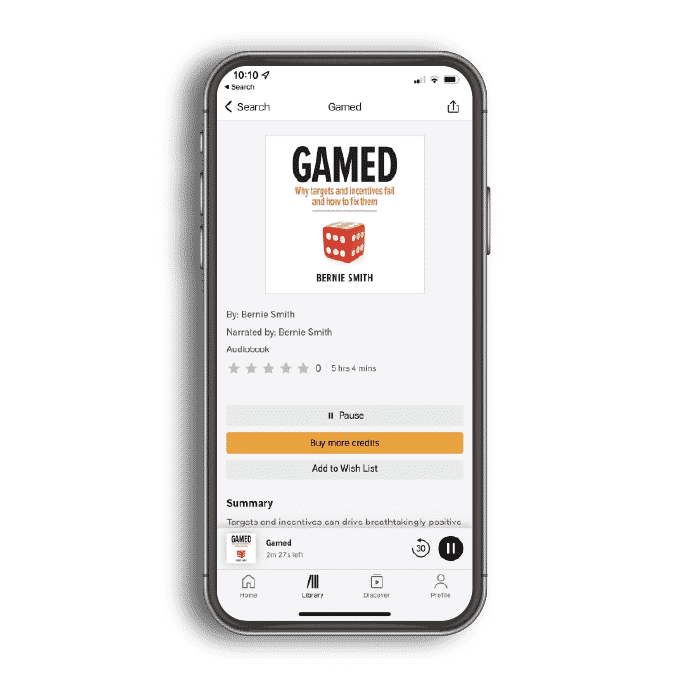
Learn how to design targets and incentives that really work


6. Net promoter score (NPS)
Net Promoter Score iss the 'net' figure generated in answer to the question “How likely are you to recommend our company/product/service to your friends and colleagues?”.
Net promoter score (NPS) is a measure of customer loyalty. It was developed by Fred Reichheld, Bain and Company, and Satmetrix. It tries to quantify the connection between a firm (the provider) and its customers (such as purchasers, employees, or users of a service). A positive score indicates that the relationship is ‘good,' while a negative score means it's ‘not good.' It's not strictly a measurement of satisfaction; rather, it's an indicator of loyalty.
NPS =(%Promoters)-(% Detractors)
Calculating Net Promoter Score (NPS)
We ask our customers to score the question “How likely are you to recommend our company/product/service to your friends and colleagues?” on a scale of 1-10.
Scoring
- 9-10 = ‘promoter’
- 7-8 = ‘passive’
- 0-6 = ‘detractor’
Once you have processed the responses into those three categories you take the percentage that are ‘promoters’ and subtract the percentage that are ‘detractors’. This gives your Net Promoter Score. The results can range from -100% (worst possible result) to +100% (best possible result).
Benefits of NPS as a KPI
It is argued that NPS is less susceptible to the mood of the customer at the time the question is answered than traditional ‘satisfaction’ assessment methods. It is important not to confuse NPS with 'customer satisfaction score' or CSAT.
It can be a useful, if lagging, indicator of customer experience.
Limitations of NPS as a KPI
To figure out why the client responded in the manner that they did, more supporting inquiries/techniques are required.
NPS may not be any better than previous customer satisfaction measurement approaches at predicting future growth, according to some experts.

7. Customer satisfaction score (CSat)
Customer satisfaction (CSat) is a customer metric that measures customer satisfaction with a product or service. It's usually calculated as the percentage of customers who are satisfied with their purchase.
Calculating Customer Satisfaction (CSat)
Customer Satisfaction (CSat) is normally just a ranged customer-generated score, typically on a 0-10 or 0-100% range, which is averaged to give an overall score.
Benefits of CSAT as a KPI
- Because it is short, simple, and easy to use, CSAT is often used as a quick way to gauge customer sentiment.
- The rating scale for CSAT can be customized to better fit the context
- Because it is quick to measure, CSAT often generates higher response rates than longer surveys.
Limitations of CSAT as a KPI
- CSAT only measures customer satisfaction at a single point in time
- CSAT does not provide insight into customer loyalty or long-term engagement.

8. Customer churn
Churn, or 'churn rate', is a measure of how many customers or users stop using a product or service within a given time period. It can be a powerful, if lagging, indictor of customer experience. In its simplest form, churn rate is the number of churned customers divided by the total number of customers at the beginning of the period.
Excessive churn rate can have a significant impact on a business, as it can lead to lost revenue, decreased customer satisfaction, and increased costs.
There are a number of factors that can contribute to high churn rate, such as poor customer service, high prices, lack of features, and defects in the product.
Calculating Customer Churn (or Customer Churn Rate)
The basic churn calculation is...
[ count of customers that you lost last period] / [count of customers that you started with last period]
There are quite a few areas that can case issues with this calculation, so be mindful that...
- If a particular product or service has a small number of customers, small differences in lost customers can lead to big swings in churn rate.
- The calculation averages over the time period used, so the reported churn rate may vary depending whether you use week, month, quarter, or year as your time interval.
- Customer segments may well churn differently. If you're not careful, aggregated churn can hide underlying trends in your customer base. This can lead you to misdiagnose problems and take action to fix a non-existent problem. So, it's important to disaggregate your churn number and look at trends within each customer segment.
Seasonality impacts churn rate
If your business varies based on the season, your churn rate may show changes that correspond with the seasonality of your business that might be hard to understand until you’ve gone through several cycles.
Benefits of customer churn rate as KPI
- Customer churn rate can give us clarity on the quality of our customer base.
- Managing and reducing churn is a key tool to improve financial performance and customer satisfaction levels.
Limitations of customer churn as KPI
The high-level churn figure does not tell you the type/segment of customer that left. Were they recent customers, or veteran high-value customers, for example? You can overcome this by segmenting the data, assuming you have the underlying data to support this and also review the Customer Lifetime Value of those who left.
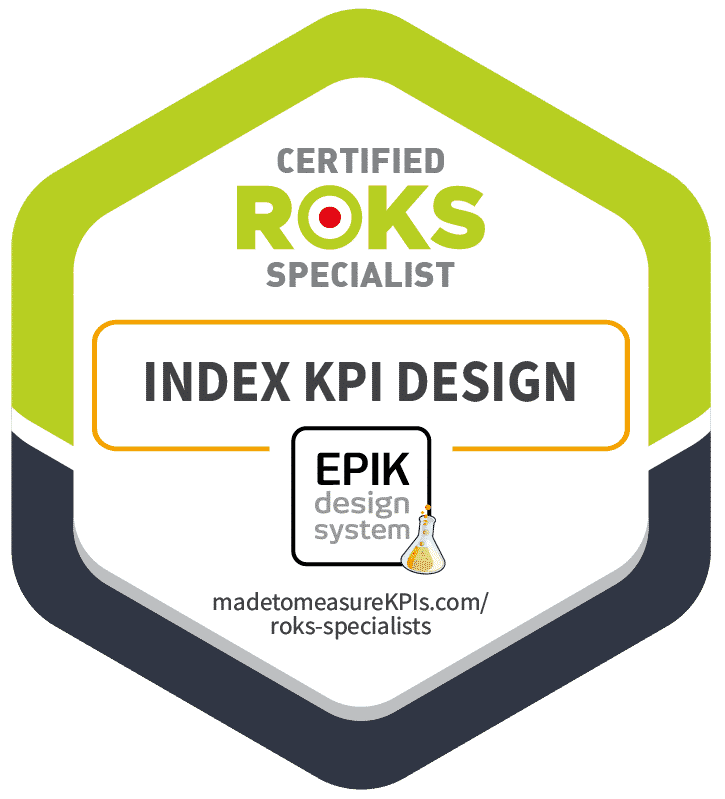


9. Social sentiment
Social sentiment analysis is a quantitative approach to measuring how people feel about your brand (typically on social media). By categorizing each brand mention as 'negative', 'positive', or 'neutral', you can get a clear picture of social sentiment around your brand. Social sentiment analysis needs to take into account the context of each mention, not just individual words - so we don't accidently assess a phrase such as 'I was not pleased' as a user being 'pleased'.
Calculating Social Sentiment
Social sentiment is normally measured using AI based 'social listening' services, so the exact method is determined by the service you subscribe to.
Benefits of social sentiment as a KPI
Social sentiment can help you manage crises, research your completition or to target you marketing. When done correctly, sentiment analysis can be a strongly leading indicator, allow your organisation to 'course correct' before problems emerge.
Limitations of social sentiment as a KPI
- Sentiment analysis using AI will not be able to correctly analyse the sentiment behind mentions which include sarcasm, humour or irony.
- You will normally need to use a paid service to measure sentiment.
Final thoughts on measuring Customer Engagement
There are many KPIs to to help you measure customer engagement, but these nine are a great start for any business, particularly those with a social media and website presence. By tracking these key indicators, you'll be able to tell if your marketing efforts are paying off and adjust your strategy accordingly.


